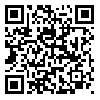Volume 22, Issue 3 (2022)
MCEJ 2022, 22(3): 37-51 |
Back to browse issues page
Download citation:
BibTeX | RIS | EndNote | Medlars | ProCite | Reference Manager | RefWorks
Send citation to:



BibTeX | RIS | EndNote | Medlars | ProCite | Reference Manager | RefWorks
Send citation to:
Ghassemieh M, Alizahi E, Mirghaderi S R. Proposing loading protocol for beam to column steel moment connection in Iran for near-field earthquakes. MCEJ 2022; 22 (3) :37-51
URL: http://mcej.modares.ac.ir/article-16-55922-en.html
URL: http://mcej.modares.ac.ir/article-16-55922-en.html
1- School of Civil EngineeringCollege of EngineeringUniversity of Tehran , m.ghassemieh@ut.ac.ir
2- School of Civil EngineeringUniversity of Tehran
3- School of Civil Engineering - University of Tehran
2- School of Civil EngineeringUniversity of Tehran
3- School of Civil Engineering - University of Tehran
Abstract: (1778 Views)
Due to the relatively high use of steel buildings in Iran and the importance of rigid steel beam-to-column connections, which are among the vital components in this type of buildings, the need to better understand the behavior of these connections against earthquakes has been noted. Also due to the special characteristics of the near-field earthquakes, which is different than far-field earthquakes and it has its own characteristics; and the fact that some catastrophic earthquakes occurred in Iran, such as the Bam earthquake (2003) and the Tabas earthquake (1978) had the characteristics of the near-field earthquakes, which can show the importance of the near-field ground motions; the purpose of this study was to propose a loading protocol for special steel moment- resisting frames under near-field earthquakes for Iran. Therefore, first, by examining the earthquakes that have occurred in Iran during several years, near-field earthquakes have been selected. Steel buildings of 3, 5, 7, 9, 12 and 20 floors were designed and analyzed according to the rules and regulations of Iran, then for each of the designed steel buildings a critical frame was determined; the values of the scale factors are also specified. After performing nonlinear time‐history analysis and applying the proposed near-field ground motions to all of the critical frames, inter-story drift angles for all frames was obtained and compared. The third floor of the 3-story critical frame was selected as the critical floor; which is a story whose results will be used to construct a loading protocol; The basic rainflow counting and simplified rainflow counting were performed for the critical inter-story drift angles results; The proposed loading protocol are derived based on the MCE-level seismic hazard and 84th percentile values of key seismic demand parameters. These parameters are number of damaging cycles, maximum inter-story drift, sum of inter-story drift range, inter-story drift range and residual inter-story. The rationality of the proposed loading protocol was justified by showing the cumulative distribution function. The proposed loading protocol has 23 damage half-cycles, including 3 pulse half-cycles with inter-story drift ranges of 0.060, 0.100 and 0.078 radians; which are calculated by the basic rainflow counting method. The maximum inter-story drift was obtained 0.065 radians. In the final half cycle, the mean value is the same as the residual inter-story drift of 0.03 radians. Also, the sum of the inter-story drift ranges is equal to 0.684 radians. The proposed loading protocol was compared with the SAC near-field earthquake protocol, the maximum inter-story drifts in the proposed protocol is 0.065 radians and in the SAC protocol is 0.06 radians. Furthermore the pulse cycles in the proposed protocol have inter-story drift ranges equal to 0.060, 0.100 and 0.078 radians; while the three pulse half-cycles at the beginning of the SAC loading protocol have inter-story drifts of 0.08, 0.05 and 0.04; respectively. Therefore, the proposed loading protocol has a higher inter-story drift and stronger pulse cycles than the SAC near-field earthquake protocol; but the total number of cycles defined in the SAC protocol is greater than the proposed protocol.
Keywords: : Steel moment-resisting frame, Near-field earthquake, Loading protocol., Rainflow counting
Article Type: Original Research |
Subject:
Earthquake
Received: 2021/09/26 | Accepted: 2022/06/15 | Published: 2022/05/31
Received: 2021/09/26 | Accepted: 2022/06/15 | Published: 2022/05/31
Send email to the article author
| Rights and permissions | |
 |
This work is licensed under a Creative Commons Attribution-NonCommercial 4.0 International License. |








